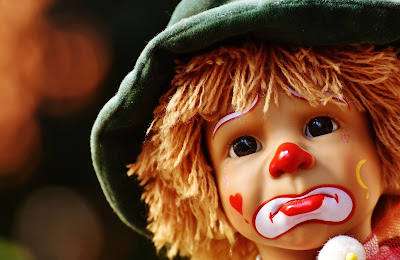How to Write a Short Story
I have been listening to wonderful stories since my childhood from very informed narrators like my grandfather and later, my father.
Whether it was the monkey warrior Hanuman or the powerful
Bhīma, I found these tales very interesting, full of suspense and topped up by
a befitting ending. Not to be left behind, the storyteller played the most
important role as he stressed skillfully on the most important aspects and
dropped the unnecessary. I always had the satisfaction of having heard something
really good and in the process learned something valuable without even being
aware of it.
The modern short story has adopted some of the above aspects
seamlessly. It would be pertinent here to understand here how it is different
from a novel.
For the novelist, the length or scope may never be a serious
consideration. He can divide his work into chapters which may be further
subdivided into various sections. He can have a plethora of characters dotting
the landscape of his writing and numerous plots and subplots merging and
twisting with each other. He may also choose to spend big time on the
underlying philosophy or the theme.
Not so for the short story writer whose narrative technique
focuses primarily on brevity and compactness. He may not have the luxury of
adding pages after pages of black ink to say what he has in mind. He has to
work within a definite framework and create a wholesome experience that has the
capacity to fulfill, enrich and if possible, surprise the reader.
So, a short story is razor sharp and pointed, it is garden
fresh and yes, it is a breakthrough.
Leo Tolstoy’s Little
Girls Wiser than Men is just a two page story written more than a century
ago but it creates an indelible impression on your heart even today due to its
simplicity and incredible insight into a routine, everyday event.
Akoúlya and Malásha are two little girls who
enjoy playing together on an early Easter day. However, they happen to pick up
a friendly fight which escalates when their elders jump in and start blaming each
other. Meanwhile, the two girls again resume their play, having forgotten their
small fight, totally oblivious of the ruckus their parents are creating.
Seeing this, an old woman remarks:
'Are you not ashamed of yourselves? To go fighting on
account of these lassies, when they themselves have forgotten all about it, and
are playing happily together. Dear little souls! They are wiser than you!'
The men finally realize their mistake and laugh it off.
Within a short space, Tolstoy creates magic and packs tremendous
punch into an apparently mundane incident.He displays a writer’s ability to convert a familiar, street side happening into something new with a profound grasp over a child’s psychology who ultimately proves to be wiser than so called adults.
Another important aspect here is that of authenticity.
When you write from your own, intense personal experience,
your story acquires a shade of truthfulness. Subsequently, it appears credible
to a reader. And it is only a credible story that can connect well with the
reader.
Even though, a skilled writer may overcome his lack of
experience with his rich imagination, it’s better for a budding writer to start
with his own experience.
I have written in detail about this subject at
Please note that a good story needs to be structured well in
order to have a strong appeal. The most famous and apt definition of
structure has been offered by none other than Aristotle who famously remarked
that every story should have ‘a beginning, a middle and an end.’
Simply put, the beginning of a story seeks to provide a
brief introduction where you may like us to meet the principal characters and
get the basic theme or idea.
The middle carries the conflict or complication and develops
it to a point of highest tension or climax.
And the ending offers a finding or resolution.
I have written more about design and structure at
In this context, it is pertinent to study O Henry’s very interesting
story Bestseller.
Initially, we are introduced to the chief protagonist John A
and get acquainted with his life as a travelling salesman for a plate –glass company.
Next, we learn about his views on the bestseller novel ‘The
Rose Lady and Trevelyan’ which he throws off in disgust. He feels that such
novels are far from reality as they show men and women from different
backgrounds falling in love. He is of the opinion that ‘When people in real
life marry, they generally hunt up somebody in their station. A fellow usually
picks up the same girl who went to the same high-school and belonged to the
same singing –society that he did.’
And thereafter, we see him following the same pattern in his
own life as a hypocrite when he falls in love with Jessie who is the daughter
of ‘the biggest man’ in Virginia.
Thus, O Henry designs his story neatly and drives home the
irony inherent in the situation in a masterly fashion.
It is also important to note how skillfully he invites the
reader to evaluate the events as they occur in the novel against those that
happen in John’s real life and form his own opinion.
That’s what a good writer does- he makes the reader part of
his story by turning him into a participant.
To summarize, as a short story writer, be concise, be different,
be authentic, design your story well and keep your style simple yet engaging.




Comments
Post a Comment